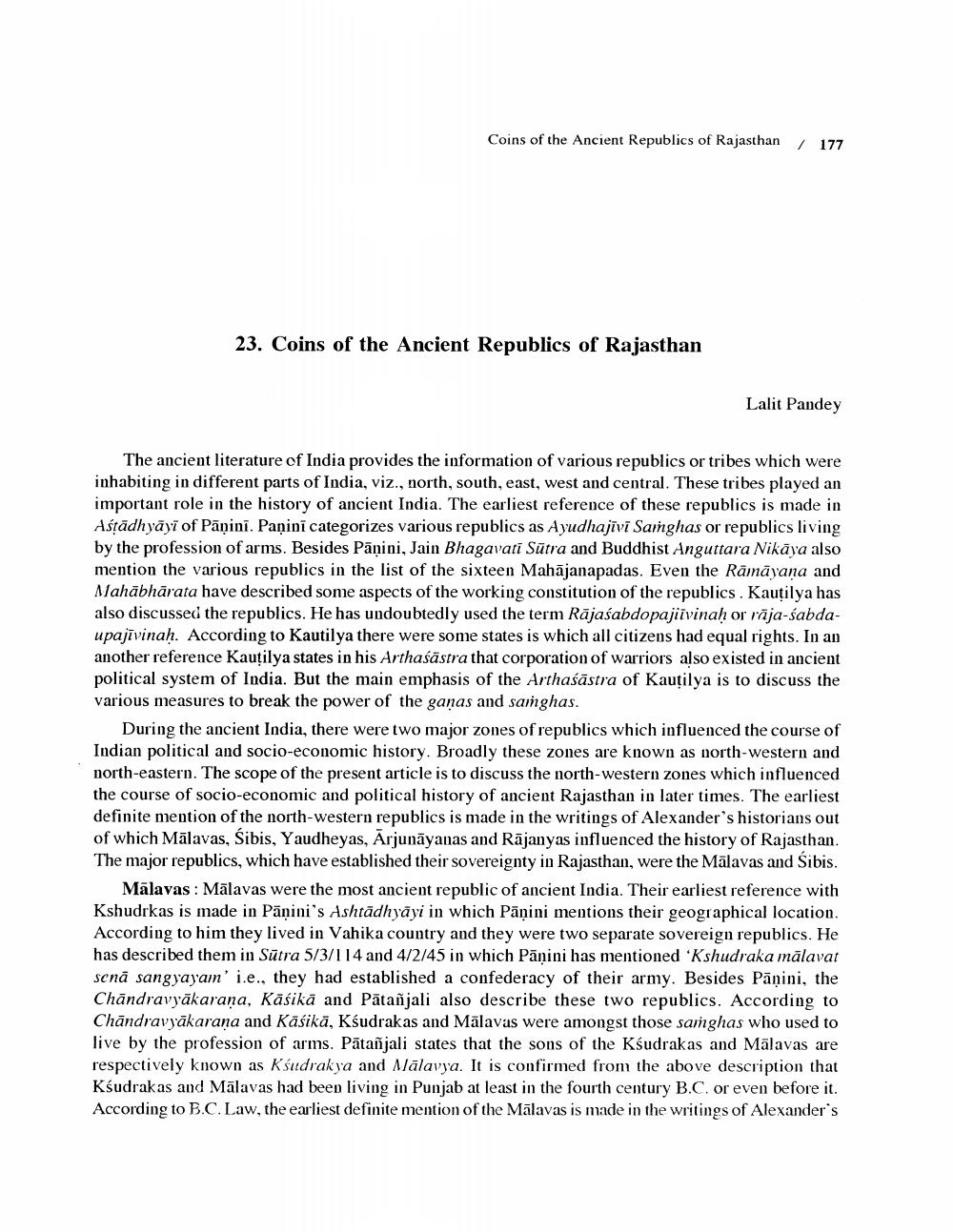________________
Coins of the Ancient Republics of Rajasthan
/
177
23. Coins of the Ancient Republics of Rajasthan
Lalit Pandey
The ancient literature of India provides the information of various republics or tribes which were inhabiting in different parts of India, viz., north, south, east, west and central. These tribes played an important role in the history of ancient India. The earliest reference of these republics is made in Astādhyāyī of Pāṇini. Paņini categorizes various republics as Ayudhajīvi Sainghas or republics living by the profession of arms. Besides Pāņini, Jain Bhagavati Sūtra and Buddhist Anguttara Nikāva also mention the various republics in the list of the sixteen Mahājanapadas. Even the Rāmāyana and Mahābhārata have described some aspects of the working constitution of the republics. Kautilya has also discussed the republics. He has undoubtedly used the term Rājaśabdopajiivinah or rāja-sabdaupajivinah. According to Kautilya there were some states is which all citizens had equal rights. In an another reference Kautilya states in his Arthaśāstra that corporation of warriors also existed in ancient political system of India. But the main emphasis of the Arthaśāstra of Kautilya is to discuss the various measures to break the power of the ganas and samghas.
During the ancient India, there were two major zones of republics which influenced the course of Indian political and socio-economic history. Broadly these zones are known as north-western and north-eastern. The scope of the present article is to discuss the north-western zones which influenced the course of socio-economic and political history of ancient Rajasthan in later times. The earliest definite mention of the north-western republics is made in the writings of Alexander's historians out of which Mālavas, Sibis, Yaudheyas, Arjunāyanas and Rājanyas influenced the history of Rajasthan. The major republics, which have established their sovereignty in Rajasthan, were the Mālavas and Sibis.
Mālavas : Mālavas were the most ancient republic of ancient India. Their earliest reference with Kshudrkas is made in Panini's Ashtādhyāyi in which Panini mentions their geographical location. According to him they lived in Vahika country and they were two separate sovereign republics. He has described them in Sūtra 5/3/114 and 4/2/45 in which Panini has mentioned Kshudraka mālavat senā sangyayam' i.e., they had established a confederacy of their army. Besides Pāṇini, the Chăndravyākarana, Kāśikā and Patanjali also describe these two republics. According to Chandravyäkarana and Käsikä, Kśudrakas and Mālavas were amongst those sainghas who used to live by the profession of arms. Pātañjali states that the sons of the Kśudrakas and Mālavas are respectively known as Ksudrakya and Mālavya. It is confirmed from the above description that Kśudrakas and Mālavas had been living in Punjab at least in the fourth century B.C. or even before it. According to B.C.Law, the earliest definite mention of the Mālavas is made in the writings of Alexander's




